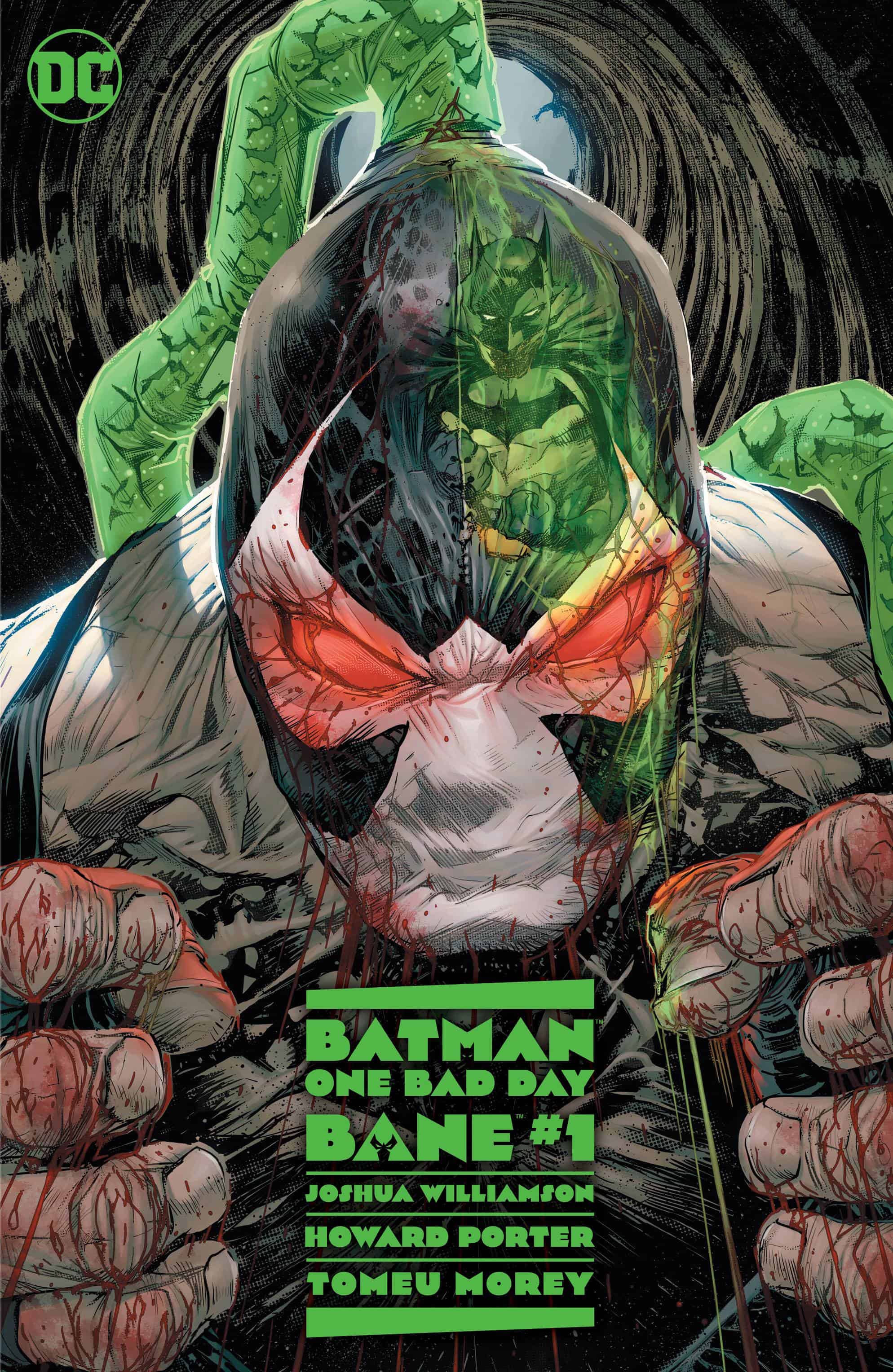Batman One Bad Day Bane #1

Recap
Bane broke the Bat--he's one of the only villains to ever truly vanquish the Dark Knight--but is that all he's ever accomplished? Decades from now, Bane is a washed-up wrestler reliving his glory days in the ring, defeating someone dressed like Batman every day. But when he discovers that there's a new source of Venom in the world, he'll do everything he can to shut down the facility it's coming from for good and make sure that no one takes the poison that ruined his life.
Review
Villain redemption is a common comic book story trope. Why and how it happens usually doesn’t matter (and sometimes whether the transformation even makes sense is unimportant so long as the desired result is achieved). But villain ennui? That doesn’t happen often. Few villains realize they’ll never top a particular achievement and simply fade into the background afterward. But that’s exactly what happened in Batman One Bad Day: Bane.
Many years have passed since Bane burst onto the scene. But he’s still breaking bats. Only now it’s in staged wrestling matches in Mexico where Bane faces opponents in unitards and Batman cowls and ends his matches by recreating the infamous over-the-leg backbreaking move he used on Batman all those years ago. There’s little more to his life than that, though. He has plenty of money and a big house that he rattles around in alone. He spends his nights reading in front of the fire above which hangs a blown-up and framed page of the Gotham Gazette from when Bane broke Batman. It’s by far the biggest thing on display in his house.
Bane’s life is complicated one night when someone breaks into his house with the news that someone is making venom again. Years earlier Bane and Batman entered into an uneasy truce to destroy all the venom with the understanding that once they were done they would fight again as enemies. With the news that someone else is making it again, Bane sets off with his informant in a quest to destroy it all.
Batman One Bad Day: Bane is not a story of redemption. At no point in it does Bane do anything redemptive (nor is there any hint he did something redemptive during his brief alliance with Batman). Indeed, he’s not even terribly sympathetic. But Williamson has made him pitiable. We learn over the course of the issue that breaking Batman was the greatest thing he did–the only thing he was ever known for. In a sense, Bane peaked too early.
“I did what no one could do before. I beat the Batman. But it has become the worst day of my life. It was I who broke that day.”
Williamson’s story feels like it’s about an old man, near the end of his life, taking stock and finding himself wanting. Bane isn’t at the end of his life, but he clearly found himself wanting a long time ago. It’s about this time that the trope of a villain wanting to be redeemed kicks in. And that’s exactly why the story works as well as it does.
Bane hasn’t spent any of these years looking for some way to redeem himself. He’s simply been looking for a way to top the success he had against Batman–his greatest achievement that has become a weight around his ankles. Every time Bane brings up the subject, it’s clear that if further crime or villainy was the way to outdoing himself, he’d go that route. And he’s been wanting that opportunity for so long that at this point he’d just as soon die than keep failing.
Porter’s art complements this perfectly. The first striking visual in Batman One Bad Day: Bane is in Bane’s home. There are fun moments in a wrestling match before that, including a somewhat more stylized recreation of Jim Aparo and Dick Giordano’s original panel of Bane shattering Batman’s spine. But the giant newspaper front page hanging above Bane’s fireplace communicates in one page what this issue is about before Williamson starts plumbing the depths of Bane’s psyche. Leading up to this page Porter has drawn all manner of pictures and awards on Bane’s walls and in display cases. But it is this one thing that is most prominent in how it’s displayed. It is this that Bane sees every time he sits before the fire
The other great success Porter has is in his depiction of Bane himself. Such a large man has never looked so small. And it’s interesting how Porter does this. During the wrestling match in the opening pages Bane looks huge. He feels every bit his size. There is weight and power behind him. All of that is gone afterward. Bane is still big, but he hunches. He wears glasses. He’s tired. He won all those years ago, but to look at Howard’s depiction of him is to see a man long defeated.
Final Thoughts
Batman One Bad Day: Bane is a fascinating character study. It’s a story about an old man (even if Bane is not old in years) who sees his life as a failure even though he did something incomparable. Williamson, Porter, and Morey have taken a villain who did what none had done before him and turned him into a broken individual withering in the light of his own success.
Batman One Bad Day Bane #1: The Weight of Success
- Writing - 10/1010/10
- Storyline - 10/1010/10
- Art - 10/1010/10
- Color - 9/109/10
- Cover Art - 9/109/10





